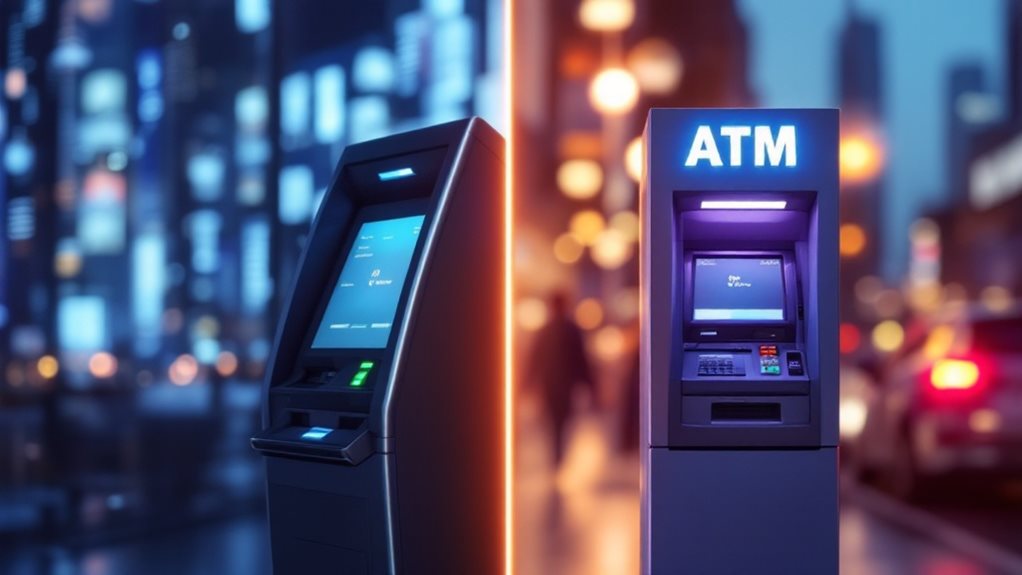Crypto on-ramps and off-ramps are platforms that connect traditional money with cryptocurrencies. On-ramps let people convert regular currency like dollars into crypto, while off-ramps do the opposite. Popular services include exchanges like Coinbase and Binance, as well as payment apps like PayPal. These platforms require identity verification and follow security rules to protect users. They're crucial tools for anyone moving between the traditional financial world and the growing digital currency ecosystem.

Countless people are discovering new ways to move between traditional money and cryptocurrencies through what's known as crypto on-ramps and off-ramps. These platforms serve as fundamental bridges connecting the traditional financial world with the digital asset ecosystem, making it easier for newcomers to enter the crypto space and for experienced users to convert their digital assets back to regular money. The integration of these platforms has created a trillion dollar potential in the Web3 economy.
Crypto on-ramps are platforms that let people convert their traditional money, like dollars or euros, into cryptocurrencies. They're typically found on popular exchanges like Coinbase and Binance, as well as payment services like PayPal and Square. These platforms have made buying crypto as simple as making an online purchase, removing many of the technical barriers that once made cryptocurrency seem intimidating. Users should be aware that crypto transactions are not truly anonymous as their real-world identity is linked to their activities.
The flip side of on-ramps are off-ramps, which let users convert their cryptocurrencies back into traditional money. This is particularly important for people who want to use their crypto profits for everyday purchases or transfer funds back to their bank accounts. Off-ramps are often integrated into the same platforms that provide on-ramp services, creating a seamless experience for users moving between both traditional and digital currencies. Many users rely on crypto debit cards to spend their digital assets directly at merchants.
There's a diverse range of options when it comes to crypto ramps. Besides the well-known centralized exchanges, there are brokerage platforms like eToro and Robinhood, peer-to-peer platforms where users can trade directly with each other, and even physical crypto ATMs located in various cities worldwide. Each option comes with its own set of features, fees, and processing times. Most centralized exchanges offer high liquidity and user-friendly interfaces for seamless trading experiences.
These platforms play a significant role in the crypto ecosystem by increasing accessibility and improving market liquidity. However, they operate under strict regulations and typically require users to verify their identity through Know Your Customer (KYC) and Anti-Money Laundering (AML) procedures. This helps guarantee the platforms remain compliant with financial regulations and protect users from fraud.
Security is another key aspect of crypto ramps. These platforms implement various measures to protect users' funds and personal information from cyber threats. While the specific security features may vary between platforms, they're crucial for maintaining user trust and protecting against unauthorized access.
The development of crypto ramps has greatly contributed to the mainstream adoption of cryptocurrencies by making it easier for people to move between traditional and digital financial systems. As the crypto industry continues to evolve, these platforms remain critical infrastructure for anyone looking to participate in the digital asset economy.
Frequently Asked Questions
What Are the Tax Implications of Using Crypto On-Ramps and Off-Ramps?
Buying crypto with regular money (on-ramp) isn't taxable, but selling crypto for cash (off-ramp) triggers capital gains tax.
The tax rate depends on how long someone's held the crypto – less than a year means higher short-term rates, while holding longer than a year qualifies for lower long-term rates.
Exchanges often report large transactions to tax authorities, and there's paperwork requirements like Form 8949 for reporting crypto gains and losses.
Which Countries Have the Most Restrictions on Crypto Ramps?
Based on the background information, China has the strictest restrictions on crypto ramps, having completely banned all cryptocurrency transactions and mining.
Other countries with severe limitations include Egypt, Nepal, Algeria, and Iraq, where crypto is entirely illegal.
Bangladesh and Bolivia also have tough restrictions, making crypto transactions punishable by law.
In these countries, it's nearly impossible to legally convert between traditional currency and cryptocurrency through any means.
How Long Do Crypto Ramp Transactions Typically Take to Process?
Crypto ramp transaction times vary based on the payment method.
Credit card deposits process in minutes, while bank transfers take up to 2 business days.
For withdrawals, Fast fund-enabled card payouts complete in under 30 minutes, but regular card payouts need up to 2 days.
SEPA Instant transfers are super quick at 10 seconds, while ACH transfers take about 2 days.
Blockchain confirmation adds extra time, ranging from seconds to 30 minutes.
Are There Ways to Avoid High Fees When Using Crypto Ramps?
There are several common ways to reduce fees when using crypto ramps.
Users can choose blockchains with lower transaction costs or time their transactions during off-peak hours.
Using bank transfers instead of credit cards often costs less.
Many platforms offer discounts for using their native tokens.
Some people save money by making larger, less frequent transactions.
Stablecoins can help avoid extra conversion fees caused by price swings.
What Security Measures Should I Look for in a Crypto Ramp Service?
Secure crypto ramp services typically have multiple protective features.
They use multi-factor authentication and strong password requirements to protect accounts. They encrypt user data and financial information, and they often store most crypto funds in offline "cold storage."
They follow strict identity verification (KYC) rules and monitor transactions for suspicious activity. They also maintain compliance with financial regulations and undergo regular security audits.





